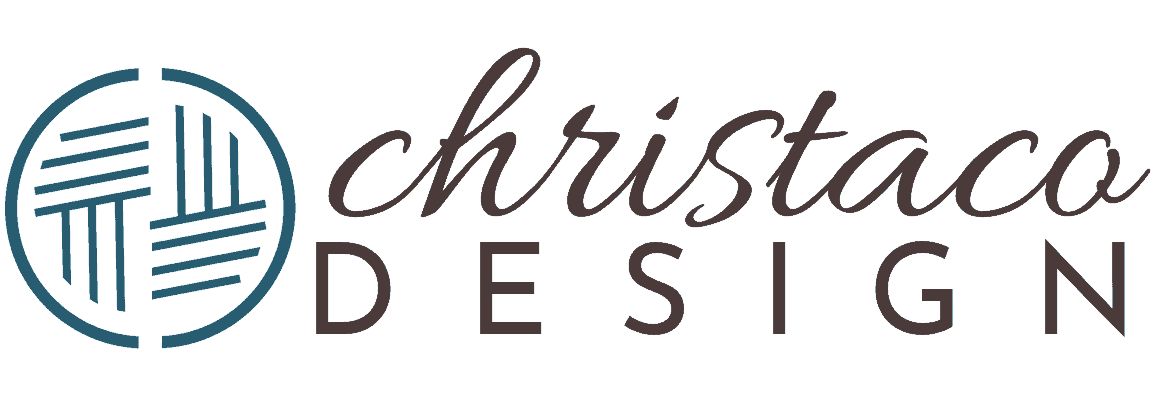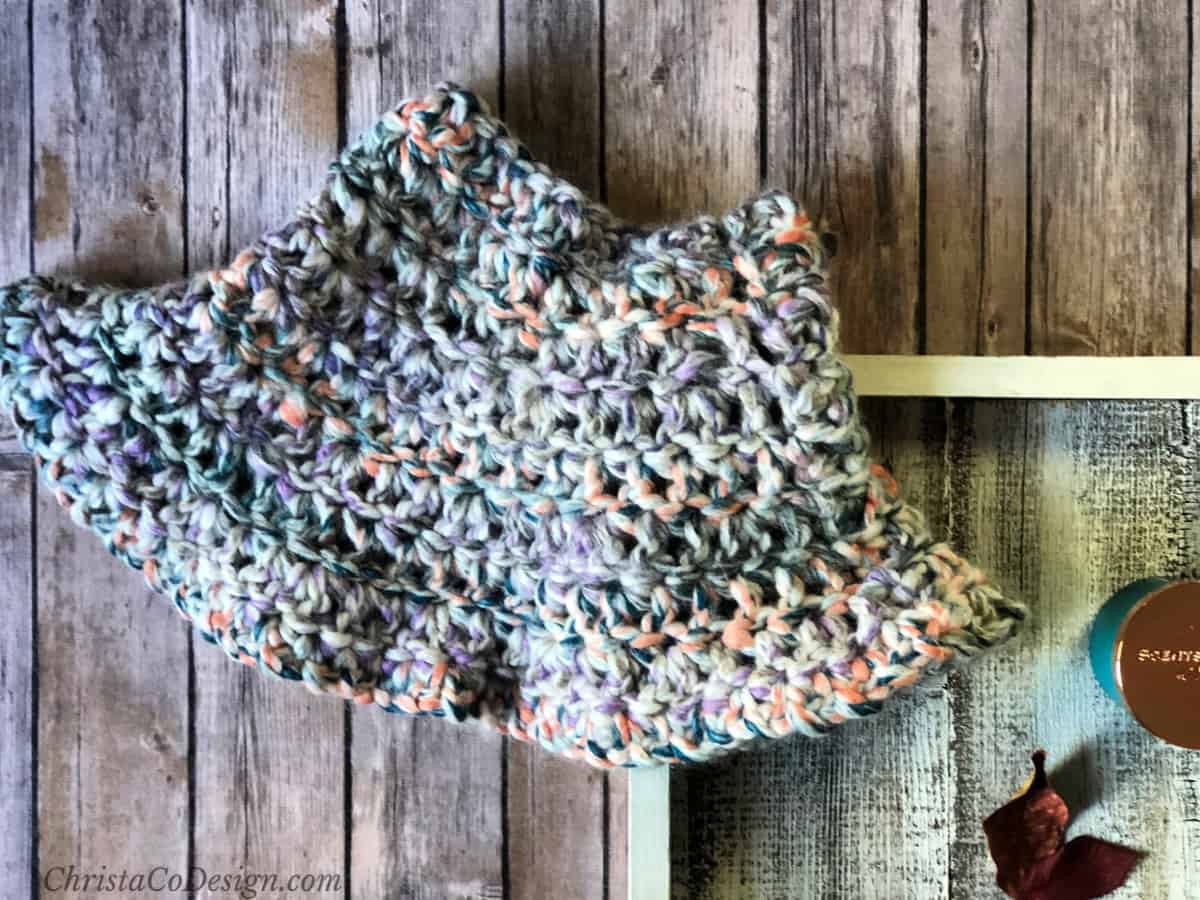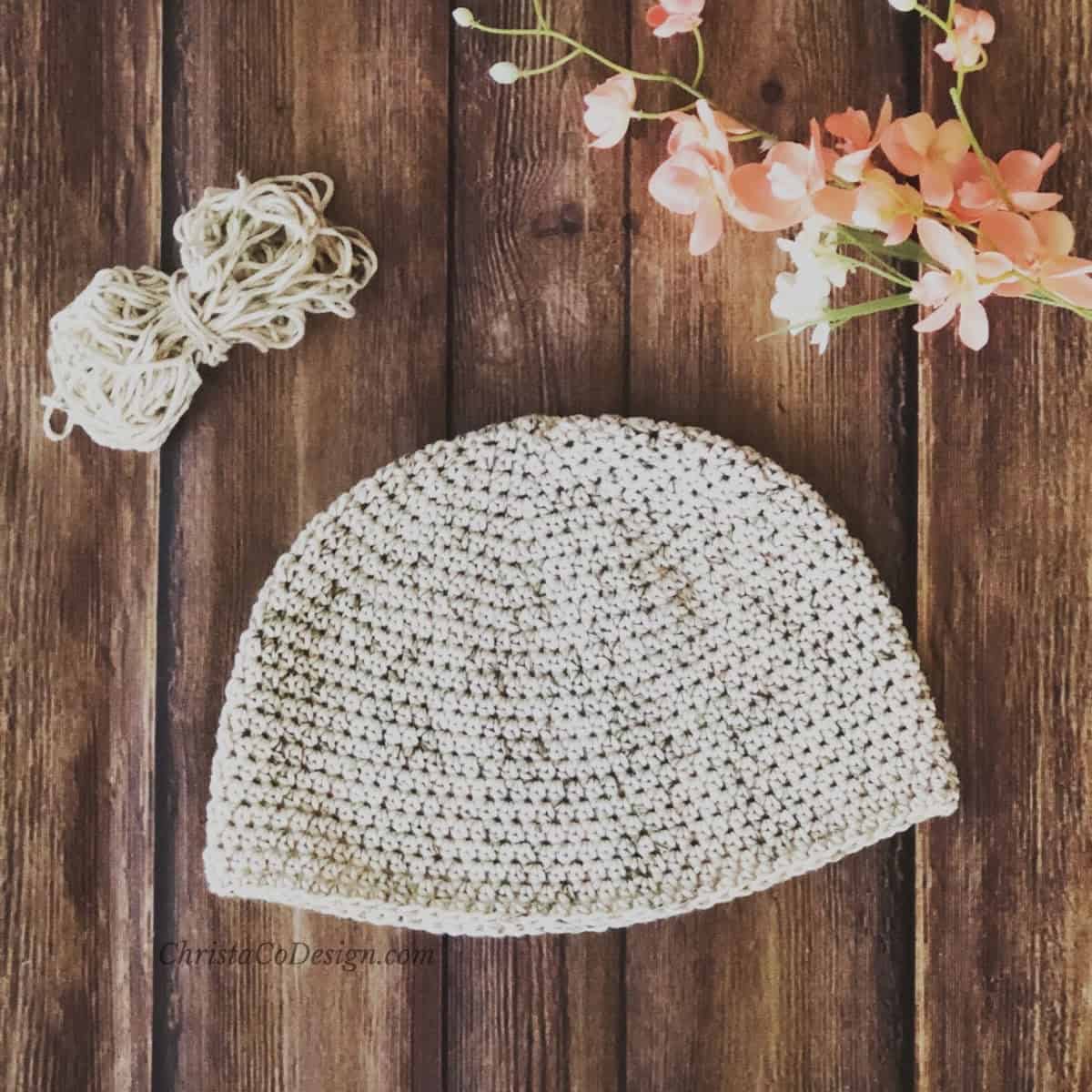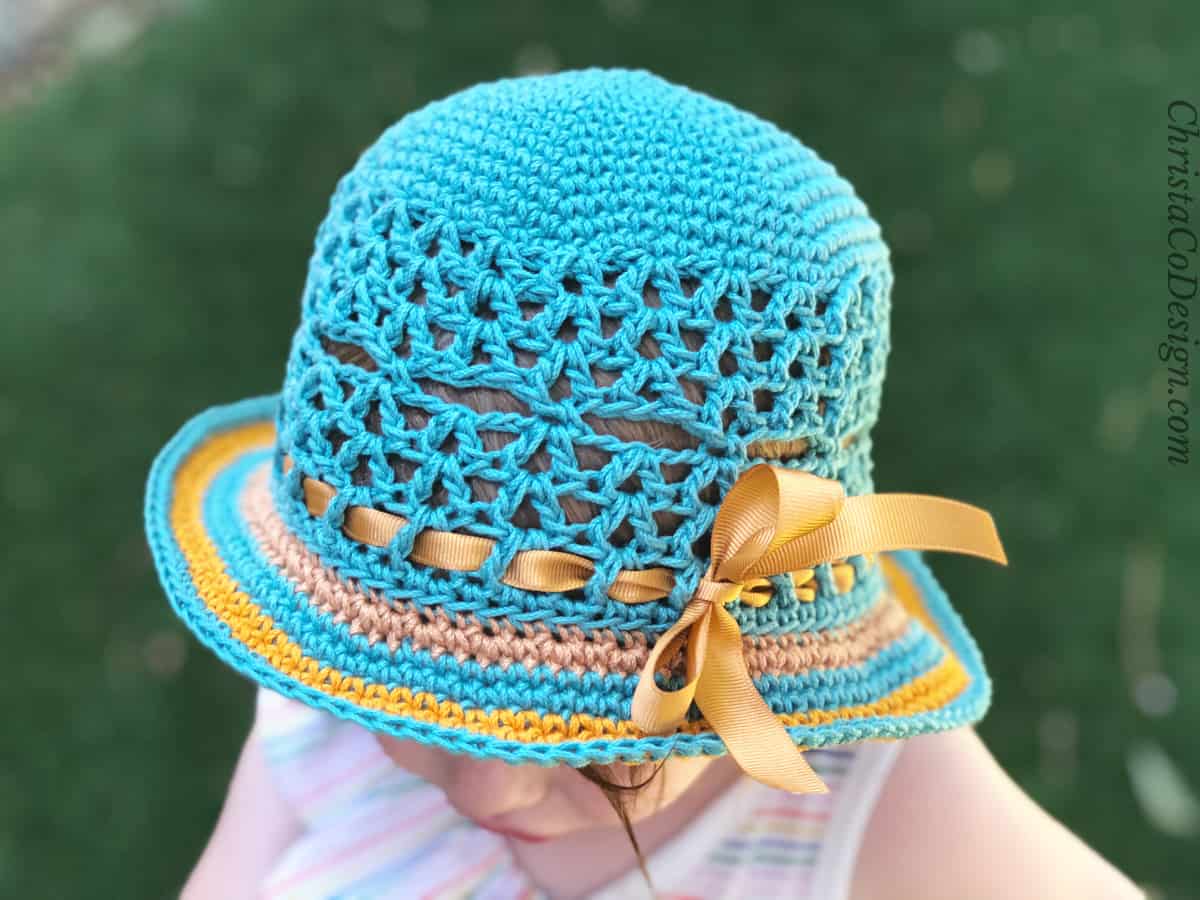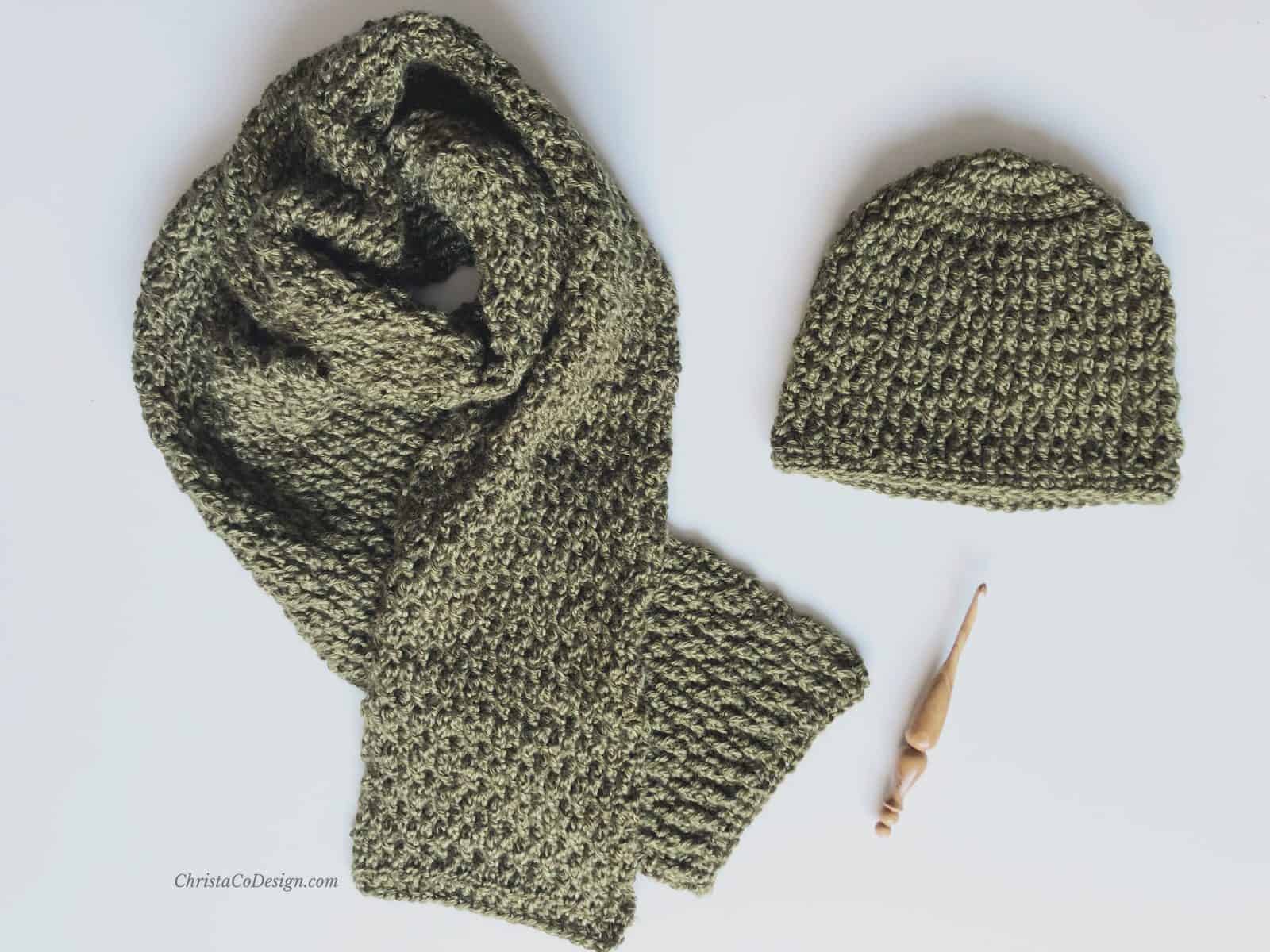Crochet Hooks: Inline vs Tapered Which Is Best For You?
Maybe you’ve come across a different style of crochet hook than you normally use and wonder what type of hook it is? And is it better than the crochet hook you’re using now?
Here we’ll explore the two main styles of crochet hook tips: inline and tapered. Below I include labeled pictures and descriptions of each part of the hook. Plus how the differences effect the yarn, stitches and your hands.
Whether you own both a tapered and an inline crochet hook you’ll get to know them well here. You’ll soon be able to tell whether you have an inline or tapered crochet just by looking.
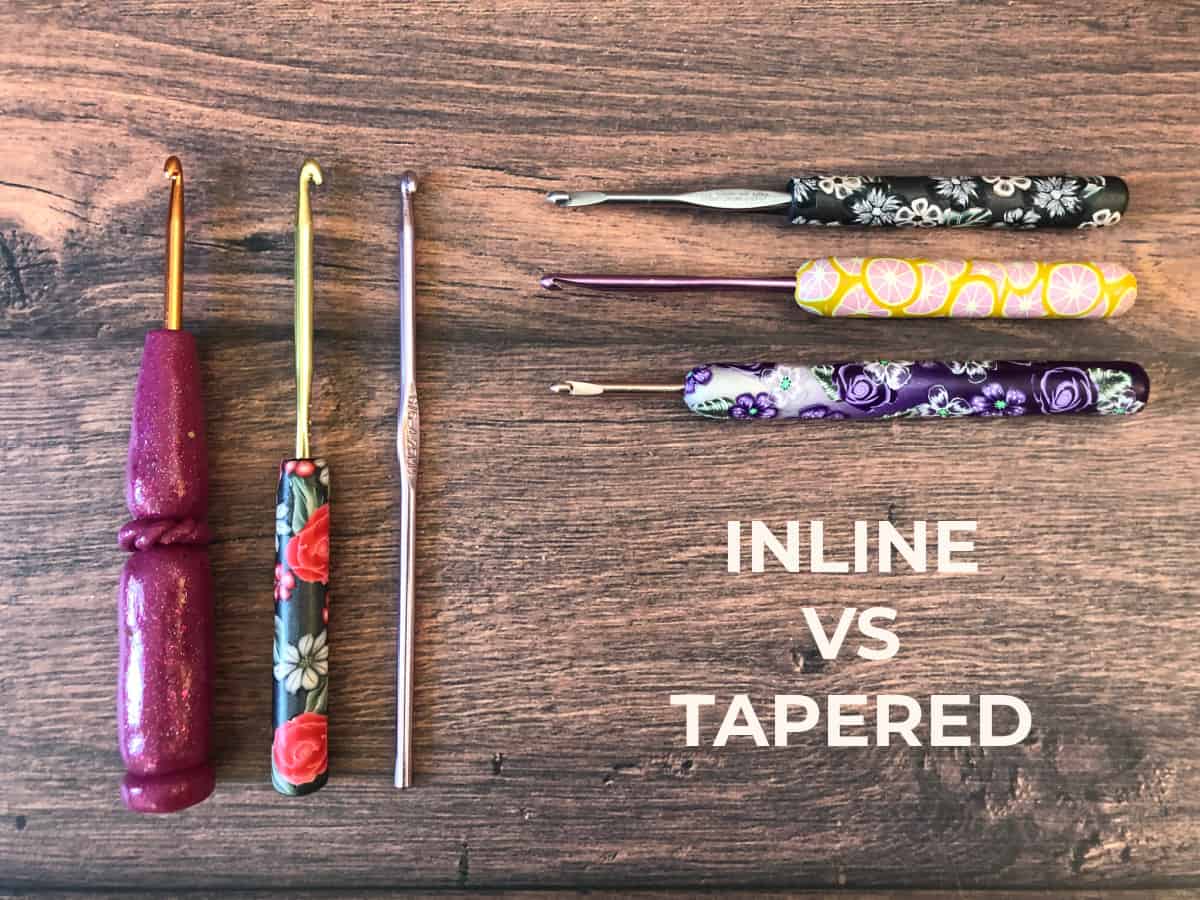
This post contains affiliate links, I may earn a fee. Read more disclosure policy.
Style of Hook
The kind of hooks you use effect so many aspects of your crocheting. From your hook hold (pencil and knife hold are two common ones) to your tension.
Different hooks have different tips with different benefits for each. Since all crochet hooks need to slide in and out of yarn and stitches without catching, the shape of the tip matters.
Not only do crocheters have different sizes of hooks, but there are also different kinds of hooks. Finding the right crochet hook can take a bit of time. But the good news is there is no wrong answer. Mostly, it’s up to your preference.
Inline hooks keep the hook in line with the shaft of the crochet hook, hence the name. Susan Bates hooks are popular inline hooks. This Susan Bates inline hook* includes a soft handle too for an ergonomic grip.
Tapered hooks stick out past the shaft and have a narrower throat, like Boye Crochet Hooks*. Below I go into details on the parts of a hook.
While tapered and inline are the main two kinds, there hooks the use a combination of these features.
Anatomy of a Crochet Hook
Crochet hooks have their own anatomy. Here are some common terms we use to describe the different parts of a hook.
- head
- throat
- shaft
- grip
- handle
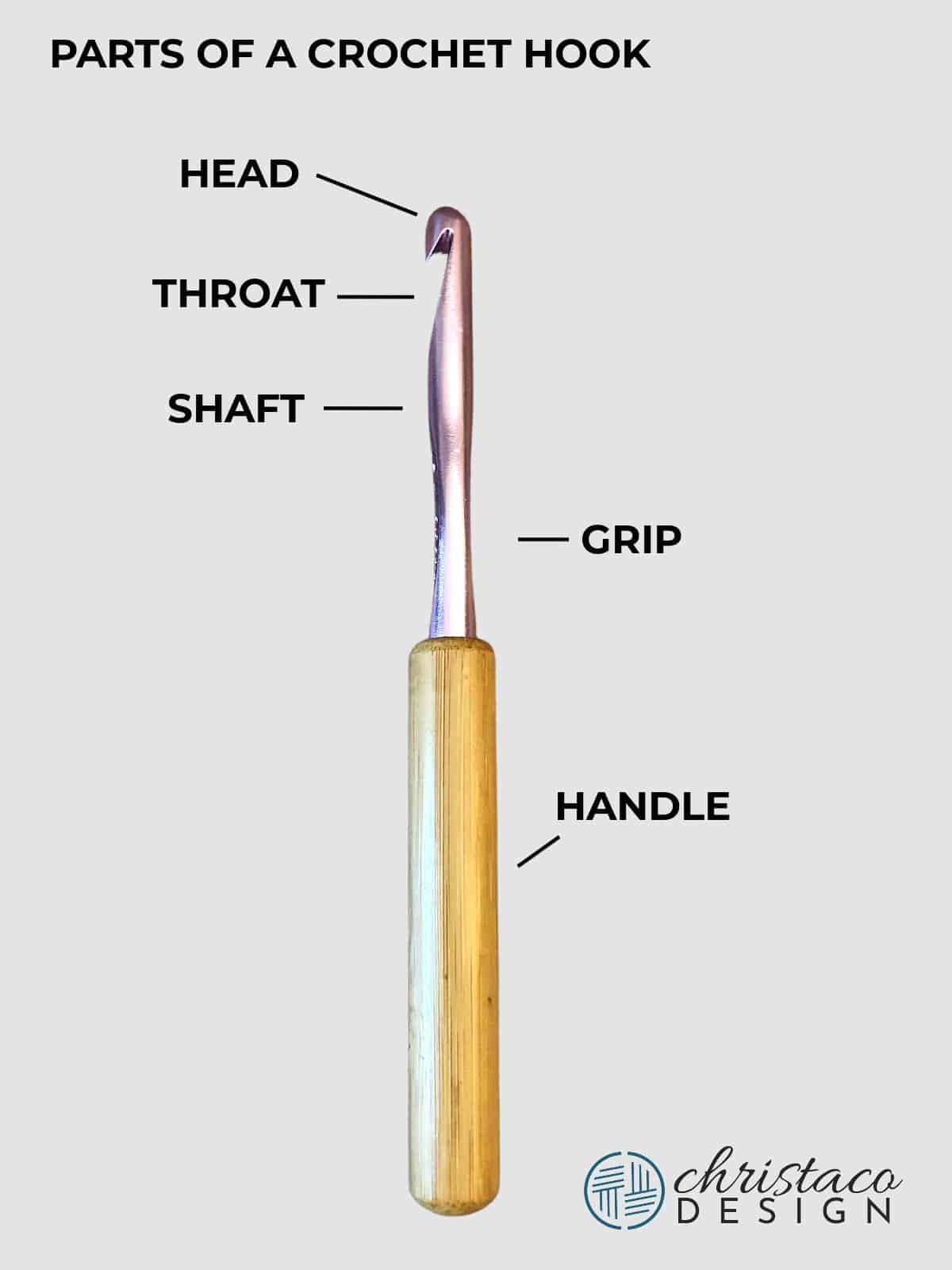
The Function of the Parts
The hook head is what you insert into the stitches. The throat of the hook leads under the hook (sometimes this part is called the mouth) and you use it to hold the yarn.
The shaft of the hook is next and determines the hook size (and therefore your stitch sizes). The grip is a flattened area intended for the crocheter to grip the hook, sometimes called a thumb rest.
The handle is the long length of the hook. Ergonomic crochet hooks have a large handle like the bamboo hook shown in the picture above.
Features
Inline Crochet Hook
Susan Bates hooks are inline hooks. These are often found in crafts stores.
Features of an inline hook are:
- pointier tip on the head
- hook is deeper
- throat is same size as shaft (does not narrow)
- head of hook lines up with the shaft of the hook
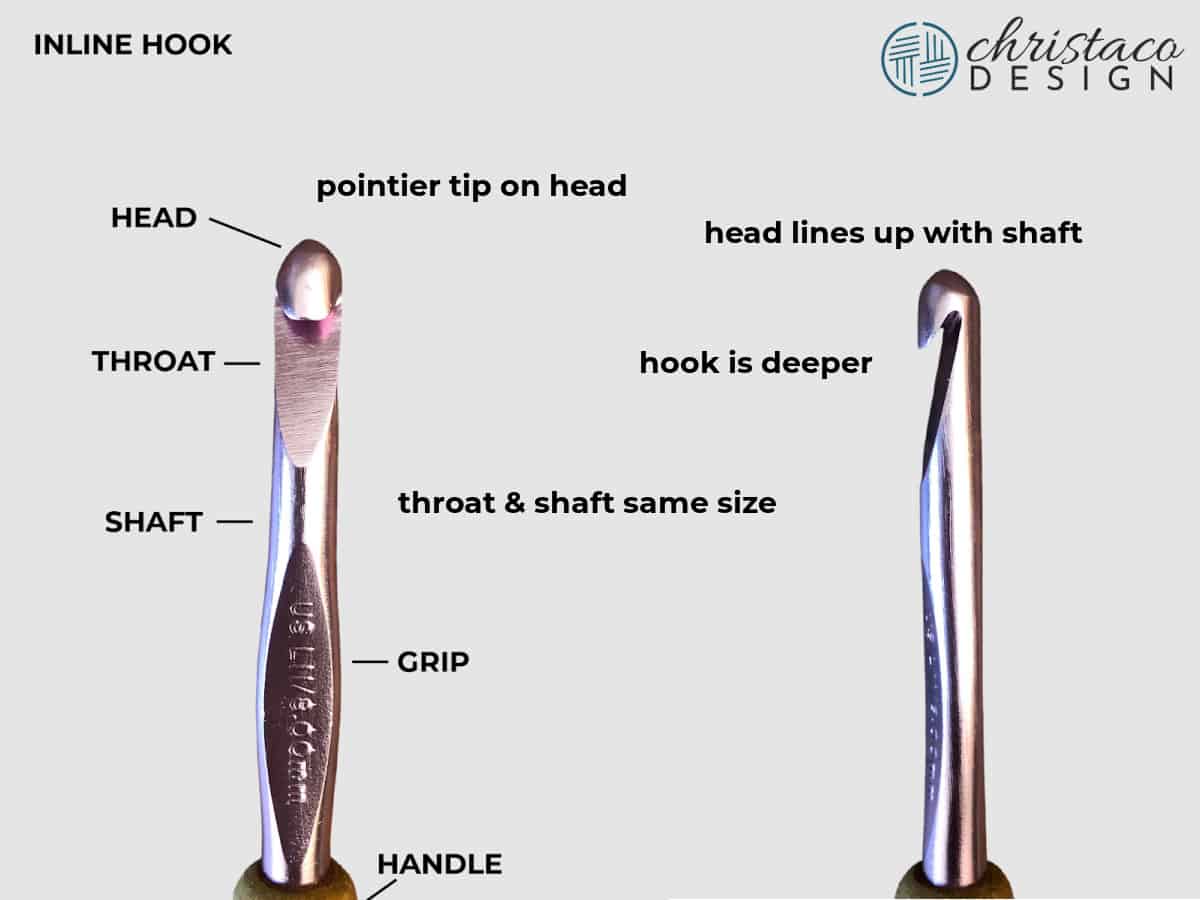
Tapered Cochet Hook
Boye hooks are tapered hooks. These are also found in stores.
Features of a tapered hook are:
- rounded point head
- shallow hook
- throat tapers in more than the shaft
- head of hook juts out past the shaft of the hook

What is the Benefit of Inline Hooks?
Inline hooks create a tip and shaft that are essentially one size. This style means inserting an inline hook into your stitches creates a seamless point of entry and exit. Which can make your stitches more uniform.
When I first discovered inline hooks, I loved them. I have a loose tension, and I think the deep hook helped keep the yarn in place.
This also makes these hook types great for beginners.
What is the Benefit of Tapered Hooks?
All the shaping and tapering of these hooks allows the yarn to move more easily. This means less moving of your hands and wrists.
Since the head of the tapered hooks is not as pointy, these hooks may not split yarn quite as easily.
Personally, I think the yarn has more to do with the splitting than the hook. But if you are crocheting with a yarn that is prone to splitting try a different kind of hook and see if it helps.
If you can tension your yarn well the tapered hook can be easier on your hands. Of course, there are many variables here, so again try these for yourself. I delve more into crochet hooks for carpal tunnel with ergonomic handles in this post.

Ergonomic Combination Hooks
Clover Amour Hooks are tapered and ergonomic. These are some of my favorite hooks to crochet with when I use cotton yarn. Clover hooks have superior glide.
I love Furls crochet hooks. Their Streamlines are a combination of tapered and inline that I really like. Plus the wooden hook is lightweight. These work for both pencil grip and knife grip. I cover their hooks in details in my post on hooks for hand health.
Tulip Etimo hooks combine features from both inline and tapered hooks. These also have an ergonomic grip. I haven’t used this type before, but I know many crocheters love them.
Tension
If you are still trying to find the best hook for you and you’re having trouble choosing consider your tension.
Crocheters who make tight stitches will want hooks that penetrate the stitches easily. The pointy hook tips might work for these types.
Those who make larger stitches have a loose tension and may want to choose hooks that really hook the yarn. The deep hooks like inline hooks help with this.
Keeping your tension consistent can be challenging to new crocheters. Try different types of crochet hooks to see which ones help you make the most consistent stitches with the least effort on your part.
What’s the Verdict?
Which one is the best crochet hook? It depends on your personal preference. There is no one size fits all for crochet hooks.
The best way to figure it out is to try a few different styles. Start with the basic crochet hooks (usually aluminum) or plastic hooks. These are an affordable way to try out different hooks.
When you decide which style you prefer, then you can invest in hooks with handles made in different materials. These provide the best grip for your palm and long crochet sessions.
There are plenty to choose from when it comes to ergonomic hooks. With a little trial and error you’re sure to find the perfect hook to do the job!
Do you have a favorite hook?
